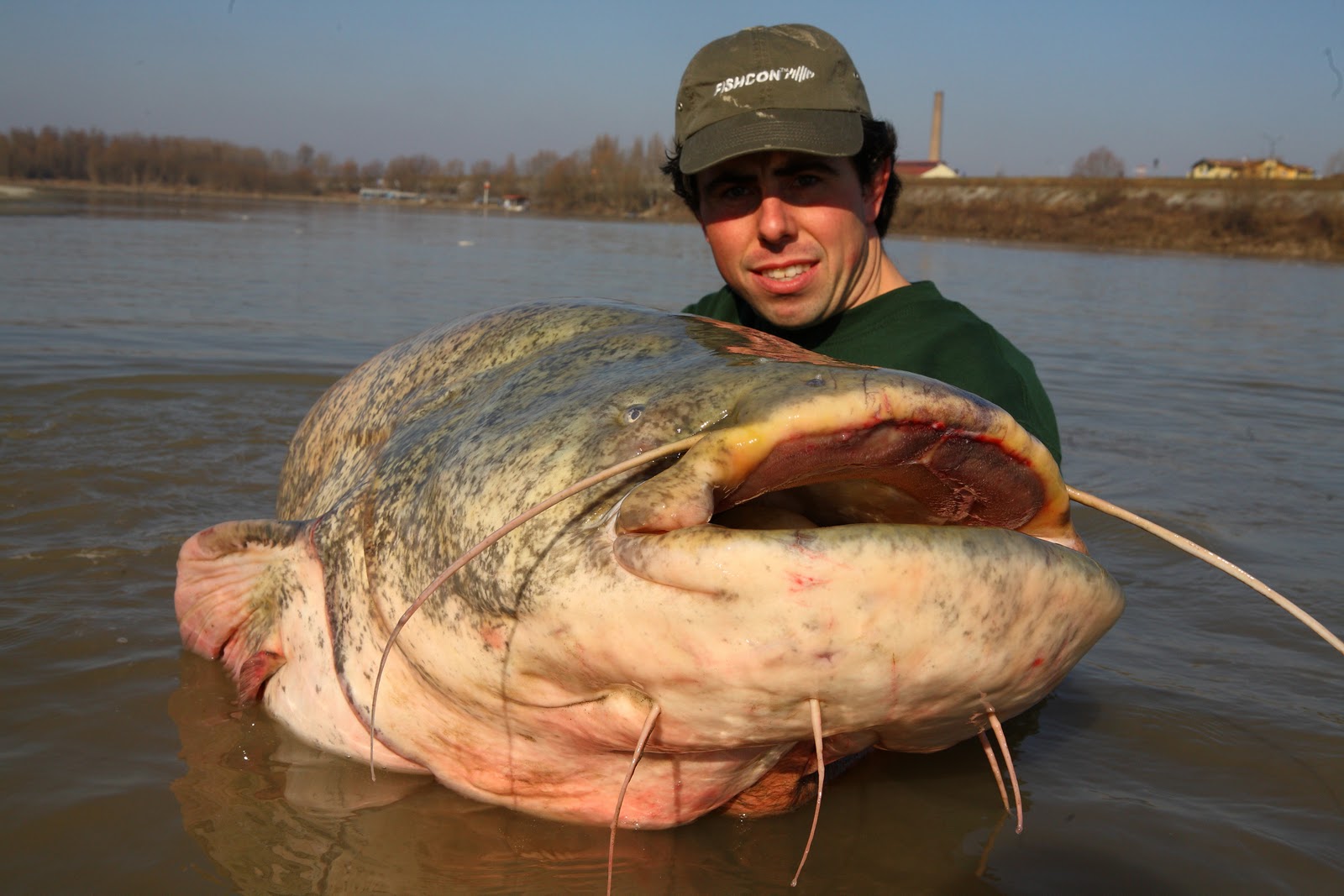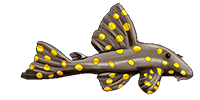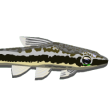Wels care/feeding
-
knifegill
- Posts: 242
- Joined: 26 Jan 2005, 10:12
- My cats species list: 22 (i:1, k:0)
- Location 1: Wa
- Location 2: wa
Wels care/feeding
Let's just pretend somebody had a wels catfish. Crazy, I know. What would the perfect foods be? Tales of them having massive appetites abound, how overstated are they? Would somebody feed them many times a night or just one massive meal? Would it even matter, since they would just grow like weeds no matter what you do? Would asian market clams and wild fish work? Could you feed the clams whole or would you need to shell them?! If you hand-feed them will they bite your hand?
Sorry about all these hypothetical questions. Just super curious.
Sorry about all these hypothetical questions. Just super curious.
An opportunity to routinely impose a statement... I'll pass. ;)
- Richard B
- Posts: 6952
- Joined: 11 Aug 2006, 13:19
- I've donated: $20.00!
- My articles: 9
- My images: 11
- My cats species list: 37 (i:0, k:0)
- My aquaria list: 4 (i:0)
- My BLogs: 2 (i:0, p:29)
- Spotted: 10
- Location 1: on the sofa, or maybe at work?
- Location 2: Warwickshire: UK
- Interests: Tanganyika Catfish, African catfish, Non-loricariid sucker-catfish.
Running, drinking, eating, sci-fi, stapelids
Re: Wels care/feeding
Some people DO have them! (Not me though)
I suspect clams & fish would be fine as would most 'meaty' food items; im pretty sure they'll not be too fussy.
I'm not sure hand feeding would be easily possible as they appear skittish unless they are totally comfortable in their surroundings & have been seen to be a timid & startled when divers have approached them in the wild. (video on youtube i think)
That said dont they just have rough bony plates in their mouths rather than actual teeth...
I suspect clams & fish would be fine as would most 'meaty' food items; im pretty sure they'll not be too fussy.
I'm not sure hand feeding would be easily possible as they appear skittish unless they are totally comfortable in their surroundings & have been seen to be a timid & startled when divers have approached them in the wild. (video on youtube i think)
That said dont they just have rough bony plates in their mouths rather than actual teeth...
Lou: Every young man's fantasy is to have a three-way.
Jacob: Yeah not with another fu**!ng guy!
Lou: It's still a three-way!
Hot Tub Time Machine: 2010
Jacob: Yeah not with another fu**!ng guy!
Lou: It's still a three-way!
Hot Tub Time Machine: 2010
-
Marc van Arc
- Expert
- Posts: 5038
- Joined: 19 Dec 2004, 14:38
- My articles: 20
- My images: 61
- My catfish: 9
- Spotted: 35
- Location 2: Eindhoven, The Netherlands
Re: Wels care/feeding
Some mothers do 'ave 'emRichard B wrote:Some people DO have them!
-
Viktor Jarikov
- Posts: 5588
- Joined: 26 Jan 2010, 20:11
- My images: 11
- My cats species list: 25 (i:0, k:0)
- Spotted: 4
- Location 1: Naples, FL
- Location 2: USA
Re: Wels care/feeding
Their perfect food would be what they feed on in the wild, which keeps changing with their age and size as they can take larger and larger items. I'd think that as long as the diet is balanced and of aquatic origin, that'd be perfect, although quality dry foods could be ok too.
http://www.fishbase.org/summary/Silurus-glanis.html : Inhabits large and medium size lowland rivers, backwaters and well vegetated lakes (Ref. 59043). Occurs mainly in large lakes and rivers, though occasionally enters brackish water in the Baltic and Black Seas (Ref. 9988). Found in deep waters of dams constructed on the lower reaches of rivers (Ref. 9696). A nocturnal predator, foraging near bottom and in water column. Larvae and juveniles are benthic, feeding on a wide variety of invertebrates and fish. Adults prey on fish and other aquatic vertebrates. Attains first sexual maturity at 2-3 years of age (Ref. 59043). Spawns in the salt water of the Aral Sea (at Kulandy) (Ref. 1441). Marketed fresh, canned and frozen; can be pan-fried and baked (Ref. 9988). Locally threatened due to river regulation destroying shallow spawning sites (Ref. 59043).
I'd think many small meals or one big don't matter, just like for almost any other similar omnivorous/predatory catfish.
My impression is that they don't grow that fast, not like RTCs and TSNs and Co but about 2-3 times slower.
Needless to say, keepers like Wednesday13 would be your best source http://www.monsterfishkeepers.com/forum ... ost6972088
http://www.fishbase.org/summary/Silurus-glanis.html : Inhabits large and medium size lowland rivers, backwaters and well vegetated lakes (Ref. 59043). Occurs mainly in large lakes and rivers, though occasionally enters brackish water in the Baltic and Black Seas (Ref. 9988). Found in deep waters of dams constructed on the lower reaches of rivers (Ref. 9696). A nocturnal predator, foraging near bottom and in water column. Larvae and juveniles are benthic, feeding on a wide variety of invertebrates and fish. Adults prey on fish and other aquatic vertebrates. Attains first sexual maturity at 2-3 years of age (Ref. 59043). Spawns in the salt water of the Aral Sea (at Kulandy) (Ref. 1441). Marketed fresh, canned and frozen; can be pan-fried and baked (Ref. 9988). Locally threatened due to river regulation destroying shallow spawning sites (Ref. 59043).
I'd think many small meals or one big don't matter, just like for almost any other similar omnivorous/predatory catfish.
My impression is that they don't grow that fast, not like RTCs and TSNs and Co but about 2-3 times slower.
Needless to say, keepers like Wednesday13 would be your best source http://www.monsterfishkeepers.com/forum ... ost6972088
Thebiggerthebetter
fish-story.com
fish-story.com
- Silurus
- Posts: 12458
- Joined: 31 Dec 2002, 11:35
- I've donated: $12.00!
- My articles: 55
- My images: 896
- My catfish: 1
- My cats species list: 90 (i:0, k:0)
- Spotted: 428
- Location 1: Singapore
- Location 2: Moderator Emeritus
Re: Wels care/feeding
No, they don't...Richard B wrote:That said dont they just have rough bony plates in their mouths rather than actual teeth...


- racoll
- Posts: 5258
- Joined: 26 Jan 2004, 12:18
- My articles: 6
- My images: 182
- My catfish: 2
- My cats species list: 2 (i:0, k:0)
- My aquaria list: 1 (i:0)
- Spotted: 238
- Location 1: London
- Location 2: UK
Re: Wels care/feeding
HH beat me to it. They really do have some quite serious teeth as you can see. I once made the mistake of landing a 10 kg fish by hand. Very bad idea.
- Richard B
- Posts: 6952
- Joined: 11 Aug 2006, 13:19
- I've donated: $20.00!
- My articles: 9
- My images: 11
- My cats species list: 37 (i:0, k:0)
- My aquaria list: 4 (i:0)
- My BLogs: 2 (i:0, p:29)
- Spotted: 10
- Location 1: on the sofa, or maybe at work?
- Location 2: Warwickshire: UK
- Interests: Tanganyika Catfish, African catfish, Non-loricariid sucker-catfish.
Running, drinking, eating, sci-fi, stapelids
Re: Wels care/feeding
I stand corrected
Lou: Every young man's fantasy is to have a three-way.
Jacob: Yeah not with another fu**!ng guy!
Lou: It's still a three-way!
Hot Tub Time Machine: 2010
Jacob: Yeah not with another fu**!ng guy!
Lou: It's still a three-way!
Hot Tub Time Machine: 2010
- Jools
- Expert
- Posts: 16272
- Joined: 30 Dec 2002, 15:25
- My articles: 198
- My images: 941
- My catfish: 237
- My cats species list: 87 (i:13, k:1)
- My BLogs: 7 (i:10, p:167)
- My Wishlist: 23
- Spotted: 450
- Location 1: Middle Earth,
- Location 2: Scotland
- Interests: All things aquatic, Sci-Fi, photography and travel. Oh, and beer.
- Contact:
Re: Wels care/feeding
How do they change when they grow? Are the teeth within fleshy pads? The image below show pads not teeth?

Jools

Jools
Owner, AquaticRepublic.com, PlanetCatfish.com & ZebraPleco.com. Please consider donating towards this site's running costs.
- Silurus
- Posts: 12458
- Joined: 31 Dec 2002, 11:35
- I've donated: $12.00!
- My articles: 55
- My images: 896
- My catfish: 1
- My cats species list: 90 (i:0, k:0)
- Spotted: 428
- Location 1: Singapore
- Location 2: Moderator Emeritus
Re: Wels care/feeding
They remain as teeth, and the reason why they don't look so prominent is because the teeth change very little in size as the fish grows. So you have two massive maxillary tooth patches on the upper jaw full of relatively small, needle-like teeth. In life, the tooth patches may be covered by a very thin layer of skin that appears to be very well vascularized (the reddish hue heightens the impression that they are fleshy pads).
If you remember that the function of the jaw teeth in most catfishes is merely for gripping prey to be swallowed (and not for cutting/shearing food), you can see why they do not really need massive caniniform teeth.
If you remember that the function of the jaw teeth in most catfishes is merely for gripping prey to be swallowed (and not for cutting/shearing food), you can see why they do not really need massive caniniform teeth.

-
knifegill
- Posts: 242
- Joined: 26 Jan 2005, 10:12
- My cats species list: 22 (i:1, k:0)
- Location 1: Wa
- Location 2: wa
Re: Wels care/feeding
I've been scooping net-fulls of tadpoles and other bugs from my pond and putting them in with him. I'll tank him this winter and train him to eat frozen from my hand.
An opportunity to routinely impose a statement... I'll pass. ;)
-
Bas Pels
- Posts: 2918
- Joined: 21 Dec 2006, 20:35
- My images: 1
- My cats species list: 28 (i:0, k:0)
- Spotted: 8
- Location 1: the Netherlands
- Location 2: Nijmegen the Netherlands
- Interests: Central American and Uruguayan fishes
Re: Wels care/feeding
Comkparin a wels to a RTC, I think the feed items will be similar, the amount less (as wels gros more slowly) but I think there is another item on the list
Winter. The Wels lives in Europe and Asia, in areas with a fierce or a more temperatred winter, but even the ones in the most temerate, Southern areas will face colder winters. The ones living in the south of France may be an example of the most temperate climate. Bordeaux has an average of 6 C in January, going further inland the temperature will drop dramatically.
I think Wels in a tank will need a winter too, and in cold water they will not eat. Not at all.
Personally, I think the hard part in keeping Wels is provinding themn with the much needed cold in winter. I think the tank should be 4 C, undisturbed and dark for at least 4 months
Obviously, reaching this 4 C will require 2 months of temp decline, and in spring 2 months of warming up
Winter. The Wels lives in Europe and Asia, in areas with a fierce or a more temperatred winter, but even the ones in the most temerate, Southern areas will face colder winters. The ones living in the south of France may be an example of the most temperate climate. Bordeaux has an average of 6 C in January, going further inland the temperature will drop dramatically.
I think Wels in a tank will need a winter too, and in cold water they will not eat. Not at all.
Personally, I think the hard part in keeping Wels is provinding themn with the much needed cold in winter. I think the tank should be 4 C, undisturbed and dark for at least 4 months
Obviously, reaching this 4 C will require 2 months of temp decline, and in spring 2 months of warming up
cats have whiskers
-
knifegill
- Posts: 242
- Joined: 26 Jan 2005, 10:12
- My cats species list: 22 (i:1, k:0)
- Location 1: Wa
- Location 2: wa
Re: Wels care/feeding
But the wels in the southernmost parts are the true monsters. Very few record wels come from the colder climates, warm = better growth. That said, I will move him to my unheated garage at first frost. Then his water will drop to very wintry temps, but not freezing. I'd prefer to keep him slightly "warmer" especially this first year to maximize growth. Once I get him to the 3 or 4 foot mark he can go into the big pond for life, and there he will experience good winters. He's only 7 inches now, and his above ground pond is fluctuating from the 60's up into the 70's by day. Rather big swing, but he shows no stress.
His first day here, when moved into little concrete pond. http://s1176.photobucket.com/user/Knife ... eshow/wels
His first day here, when moved into little concrete pond. http://s1176.photobucket.com/user/Knife ... eshow/wels
An opportunity to routinely impose a statement... I'll pass. ;)
-
Viktor Jarikov
- Posts: 5588
- Joined: 26 Jan 2010, 20:11
- My images: 11
- My cats species list: 25 (i:0, k:0)
- Spotted: 4
- Location 1: Naples, FL
- Location 2: USA
Re: Wels care/feeding
Some wels keepers, such as Wednesday13 mentioned above (see the link to his thread, see pages 6-8), report weird wels behavior wherein his wels (he's kept three) would develop ich every time the temp drops even a bit, into the low 70-ies, upper 60-ies.
I have no reason to question Wednesday13's fish-keeping skills as he is a high level, quite experienced, large-fish-keeping hobbyist IMO. And I understand this is weird, but this hard-to-digest fact remains...
I have no reason to question Wednesday13's fish-keeping skills as he is a high level, quite experienced, large-fish-keeping hobbyist IMO. And I understand this is weird, but this hard-to-digest fact remains...
Thebiggerthebetter
fish-story.com
fish-story.com
-
knifegill
- Posts: 242
- Joined: 26 Jan 2005, 10:12
- My cats species list: 22 (i:1, k:0)
- Location 1: Wa
- Location 2: wa
Re: Wels care/feeding
Temperature tolerance would vary by stock. Mine is from a farm in czech, so presumably freezing would be the norm. UNLESS they are being reared in heated indoor ponds and haven't seen winter in 200 generations. That could spell trouble. But heating a million gallons of water would be presumably cost-prohibitive. I feel confident that my cat will winter well. Perhaps Wednesday13's cat came from southern areas, like Spain?
An opportunity to routinely impose a statement... I'll pass. ;)
-
Viktor Jarikov
- Posts: 5588
- Joined: 26 Jan 2010, 20:11
- My images: 11
- My cats species list: 25 (i:0, k:0)
- Spotted: 4
- Location 1: Naples, FL
- Location 2: USA
Re: Wels care/feeding
Yeah, IDK the answer to that question. It's been bugging me a while. Does anyone have any ideas?
Ebro's pretty cold in winters. http://en.wikipedia.org/wiki/Ebro "Summers are hot and winters are cold. The dry summer season has temperatures of more than 35 °C (95 °F), occasionally reaching over 40 °C (104 °F). In winter, the temperatures often drop below 0° C. In some areas the vegetation depends heavily on moisture produced by condensation fogs. It is a continental Mediterranean climate with extreme temperatures. There are many ground frosts on clear nights, and sporadic snowfalls."
I lived in Algeria for 4 years - the average air temp in winter is ~10 C, so even northern Africa is not tropical and not even subtropical, more of continental climate, it appears, around all of Mediterranean.
Ebro's pretty cold in winters. http://en.wikipedia.org/wiki/Ebro "Summers are hot and winters are cold. The dry summer season has temperatures of more than 35 °C (95 °F), occasionally reaching over 40 °C (104 °F). In winter, the temperatures often drop below 0° C. In some areas the vegetation depends heavily on moisture produced by condensation fogs. It is a continental Mediterranean climate with extreme temperatures. There are many ground frosts on clear nights, and sporadic snowfalls."
I lived in Algeria for 4 years - the average air temp in winter is ~10 C, so even northern Africa is not tropical and not even subtropical, more of continental climate, it appears, around all of Mediterranean.
Thebiggerthebetter
fish-story.com
fish-story.com




